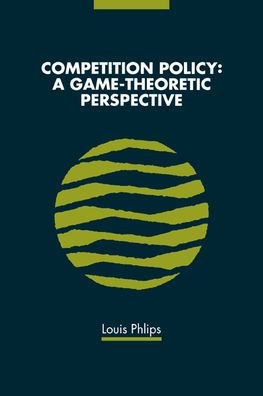Competition Policy: A Game-Theoretic Perspective
This book uses game theory to analyze anti-competitive behavior among firms and to consider its implications for competition policy. Topics include "explicit collusion," "tacit collusion," "semicollusion," and the detection of predatory pricing. The book discusses several European antitrust decisions and empirical studies in detail.
1100952903
Competition Policy: A Game-Theoretic Perspective
This book uses game theory to analyze anti-competitive behavior among firms and to consider its implications for competition policy. Topics include "explicit collusion," "tacit collusion," "semicollusion," and the detection of predatory pricing. The book discusses several European antitrust decisions and empirical studies in detail.
45.0
In Stock
5
1

Competition Policy: A Game-Theoretic Perspective
292
Competition Policy: A Game-Theoretic Perspective
292Paperback(New Edition)
$45.00
45.0
In Stock

Product Details
| ISBN-13: | 9780521498715 |
|---|---|
| Publisher: | Cambridge University Press |
| Publication date: | 10/19/1995 |
| Edition description: | New Edition |
| Pages: | 292 |
| Product dimensions: | 6.14(w) x 9.21(h) x 0.63(d) |
From the B&N Reads Blog
